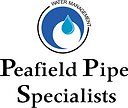Pipeline pressure testing is a crucial process employed in various industries to ensure the safety, reliability, and efficiency of pipelines. It involves subjecting pipelines to controlled pressure levels to assess their structural integrity, detect leaks, and comply with industry standards and regulations. This article explores the significance of pipeline pressure testing and its role in safeguarding critical infrastructure.
The Purpose of Pipeline Pressure Testing
The primary objective of pipeline pressure testing is to guarantee the structural integrity of pipelines and identify any potential leaks. By subjecting pipelines to elevated pressures, testing helps reveal weak spots, weld defects, or other vulnerabilities that could compromise their performance. Additionally, pressure testing ensures compliance with industry regulations, making certain that pipelines can withstand operational stresses and prevent accidents that might pose environmental risks.
Types of Pipeline Pressure Testing
There are two primary methods of pipeline pressure testing: hydrostatic testing and pneumatic testing. Hydrostatic testing involves filling the pipeline with water or another suitable liquid and applying pressure to check for leaks or weaknesses. On the other hand, pneumatic testing employs compressed air or gas to pressurize the pipeline. Each method has its benefits and limitations, and their selection depends on factors such as the pipeline material, project requirements, and safety considerations.
Key Factors in Pipeline Pressure Testing
Determining the appropriate test pressure is critical in pipeline pressure testing. Factors like pipeline material, intended operating conditions, and safety standards influence the selection of test pressure. Striking a balance between safety requirements and operational demands is essential. Additionally, monitoring techniques and instruments play a vital role in accurately measuring pressure during the testing process, ensuring reliable results.
Benefits and Implications of Effective Pressure Testing
Effective pipeline pressure testing offers numerous benefits. Firstly, it enhances safety by preventing catastrophic failures and accidents. By detecting weaknesses and potential failures in advance, pressure testing minimizes the risk of incidents that could endanger personnel, communities, and the environment. Secondly, it improves pipeline integrity and reliability, leading to extended pipeline lifespan and reduced maintenance costs. Finally, pressure testing ensures regulatory compliance, helping companies meet legal requirements and building trust among stakeholders.
Challenges and Considerations
While pipeline pressure testing is crucial, it is not without challenges. Risks and hazards associated with the testing process need to be carefully managed to prevent accidents. Additionally, the limitations of different testing methods, such as time constraints and practicality, should be considered. Furthermore, the cost considerations and resource allocation required for comprehensive testing activities need to be balanced with project budgets and timelines.
Best Practices for Effective Pipeline Pressure Testing
To ensure effective pipeline pressure testing, several best practices should be followed. Proper preparation and planning of the testing process are vital, including the identification of suitable testing methods and equipment. Adequate training and certification of personnel involved in testing activities are essential to maintain accuracy and safety. Regular maintenance and inspection of testing equipment contribute to reliable results. Lastly, comprehensive documentation and record-keeping enable future reference and help in evaluating the integrity of pipelines over time.
Case Studies and Real-World Applications
There are numerous examples of successful pressure testing initiatives in various industries. These case studies highlight the positive impact of thorough testing procedures on pipeline safety and reliability. Additionally, notable incidents that underscore the importance of pressure testing serve as reminders of the potential consequences of overlooking this critical process.
Conclusion
Pipeline pressure testing plays a vital role in ensuring the safety, reliability, and efficiency of pipelines. By subjecting pipelines to controlled pressure, this process reveals weaknesses, detects leaks, and ensures compliance with industry standards and regulations. The benefits of effective pressure testing include enhanced safety, improved pipeline integrity, and regulatory compliance. However, challenges such as risk management and resource allocation need to be addressed. By following best practices and learning from case studies, industries can continue to invest in pressure testing to safeguard critical infrastructure and maintain stakeholder trust.
